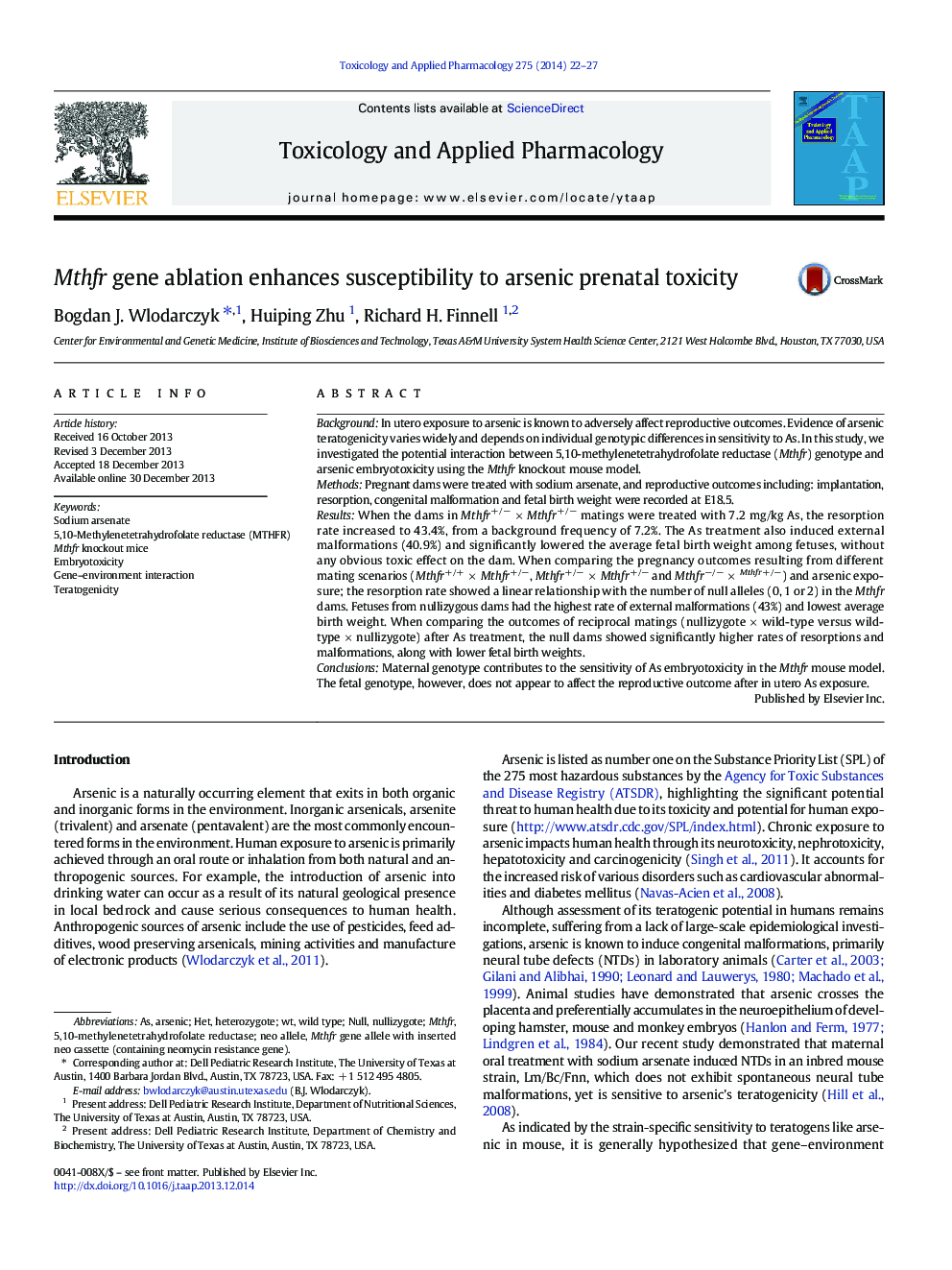| کد مقاله | کد نشریه | سال انتشار | مقاله انگلیسی | نسخه تمام متن |
|---|---|---|---|---|
| 2568582 | 1128467 | 2014 | 6 صفحه PDF | دانلود رایگان |
• An interaction between Mthfr genotype and arsenic embryotoxicity is presented.
• Maternal Mthfr genotype contributes to the sensitivity of As embryotoxicity.
• Fetal Mthfr genotype does not affect the reproductive outcome after As exposure.
BackgroundIn utero exposure to arsenic is known to adversely affect reproductive outcomes. Evidence of arsenic teratogenicity varies widely and depends on individual genotypic differences in sensitivity to As. In this study, we investigated the potential interaction between 5,10-methylenetetrahydrofolate reductase (Mthfr) genotype and arsenic embryotoxicity using the Mthfr knockout mouse model.MethodsPregnant dams were treated with sodium arsenate, and reproductive outcomes including: implantation, resorption, congenital malformation and fetal birth weight were recorded at E18.5.ResultsWhen the dams in Mthfr+/− × Mthfr+/− matings were treated with 7.2 mg/kg As, the resorption rate increased to 43.4%, from a background frequency of 7.2%. The As treatment also induced external malformations (40.9%) and significantly lowered the average fetal birth weight among fetuses, without any obvious toxic effect on the dam. When comparing the pregnancy outcomes resulting from different mating scenarios (Mthfr+/+ × Mthfr+/−, Mthfr+/− × Mthfr+/− and Mthfr−/− × Mthfr+/−) and arsenic exposure; the resorption rate showed a linear relationship with the number of null alleles (0, 1 or 2) in the Mthfr dams. Fetuses from nullizygous dams had the highest rate of external malformations (43%) and lowest average birth weight. When comparing the outcomes of reciprocal matings (nullizygote × wild-type versus wild-type × nullizygote) after As treatment, the null dams showed significantly higher rates of resorptions and malformations, along with lower fetal birth weights.ConclusionsMaternal genotype contributes to the sensitivity of As embryotoxicity in the Mthfr mouse model. The fetal genotype, however, does not appear to affect the reproductive outcome after in utero As exposure.
Journal: Toxicology and Applied Pharmacology - Volume 275, Issue 1, 15 February 2014, Pages 22–27
